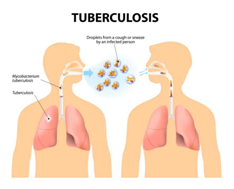The road to ending tuberculosis
Context: In 1993 the world got a wake-up call about tuberculosis (TB) when the World Health Organization declared it a global health emergency. The 1993 World Development Report labelled TB treatment for adults as the best buy among all developmental interventions. The current goal is to end TB by 2030, but clarity on definitions of ‘end’ and the means of verification are not fully in place.
The Global Fund
- Following on the call first made in 2001 at the G7 in Okinawa, Japan, by Kofi Annan, and formalised at the next summit in Genoa, Italy, The Global Fund to Fight AIDS, TB and Malaria began disbursing the first round of money directed towards the global TB epidemic in 2003.
- Twenty years on, the Global Fund has become the single largest channel of additional money for global TB control.
- But it remains hostage to the zero-sum games imposed on it from its donor constituents and between the champions of the three diseases the Fund was set up to provide additional financing for.
- Mandated with the task of mobilising and marshaling a disparate set of actors towards the goal of ending TB, the StopTB Partnership got a formal presence on the board of the Global Fund close to seven years after it was constituted.
- Despite constraints, the global TB response has been adapting to changes: the HIV response has inspired ‘engagement’ of those affected by the disease; the use of molecular diagnostic tools developed to respond to acts of bioterrorism 20 years ago are the current state of the art for diagnosing TB.
- Using social safety programmes to address the poverty drivers of the TB epidemic and leveraging the “mobile and computational data revolution” to improve treatment outcomes have also begun shaping the trajectory of global efforts to end TB.
Three areas
- There are three key areas that remain under-served. Without strengthening or radically re-imagining them, the chances of success in ending TB by 2030 become slimmer.
- India’s leadership of the G20 and the focus on health could be catalytic, in the same manner that the Japanese G7 presidency in 2001 was for the creation of the Global Fund.
- Providing historical symmetry, Japan leads the G7 in 2023, providing leaders of both nations and groupings to act synergistically towards ending TB.
- The first area — and the one likely to take the longest to mature despite exciting developments — is in the development and wide use of an adult TB vaccine.
- The current one, delivered at birth and useful particularly for children, is 100 years old.
- The experience with the COVID-19 vaccine development process gives us an understanding on how things can be done if there is collective will and action.
- It is also no surprise that Indian efforts feature prominently in the list of vaccines that are under development. The pitfalls of equitable distribution seen with the COVID-19 vaccines should definitely be avoided. This is again an area that plays to India’s capabilities.
2. The second area — one that can move much faster than the vaccine — is that of getting newer therapeutic agents for TB.
- After a development drought of nearly five decades, a few new anti-TB drugs are today available for widespread use, if only costs and production capacities weren’t constraints.
- Moving to an injection-free and shorter all oral pills regimen for TB (the current standard is for at least six months) will improve compliance and reduce patient fatigue.
- The effort to come up with a raft of newer drugs needs to accelerate so that when drug resistance shows up to the most recently introduced drugs — and it will, for this a battle for survival for the TB bacilli, and they are proven masters at surviving over millennia.
- Current estimates of drug-resistant TB are discouraging at best and alarming at worst. Not having a ready pipeline of newer drugs is repeating a folly from the past.
3. The third and most immediate area of action is within the space of diagnostics.
- There are exciting developments for use of AI-assisted handheld radiology with 90-second reporting and 95% plus accuracy for diagnosing TB.
- This is mature technology, and should be rolled out universally immediately. Sentinel, passive surveillance and interpretation of cough sounds for TB is another breakthrough area.
- This allows for unobtrusive home-level screening and monitoring and provides nudges for seeking treatment.
- This technology is ready for larger-scale use, and could potentially change the way public spaces can be monitored along with other air quality indicators.
- Confirmatory diagnosis using nucleic acid amplification is ripe for disruption. India convened the InDx diagnostics coalition in Bengaluru for COVID-19.
- This, and other biotech startups, should be incentivised to break the complexity of molecular testing and price barriers with affordable high-quality innovations. New innovations in this space should extend utilisation of present funds available for purchase of TB diagnostics to buy twice as much.
| Practice Question
1. Since 1993 the world has taken several measures to end TB but it is still a big problem in the world.” Discuss various reason for this. Give some solutions to prevent Tuberculosis. |




